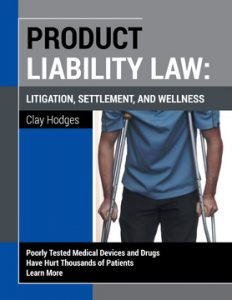
The statute of limitations can be the strongest defense a product manufacturer will bring to defend itself and avoid paying money in a product liability lawsuit. It can be deadly to your medical device or drug case. The problem is, determining the proper deadline to bring your lawsuit is rarely simple. It is critical that you find someone who can figure out when the clock started ticking on your product liability case.
Definition
Let’s start with a simple definition: a statute of limitations is a state law which limits the time period when you may bring a lawsuit for money damages for a personal injury. In each state you have a certain number of years from the injury, or the date of discovery of the injury, to file a lawsuit and recover money for your injuries.
If you miss this deadline, you lose your right to bring the lawsuit, forever. These statutes must be taken very seriously.
Rationale
The rationale makes sense: citizens and companies do not need to be vulnerable to being sued indefinitely for an act of negligence. If you were in my grocery store twelve years ago, slipped on a banana peel, broke your arm, got medical treatment, recovered, then waited over a decade and finally sued me and my grocery store for negligence, it could be a serious hardship on me and deeply unfair. I need reasonable assurance that I won’t be exposed to lawsuits forever. So states across the country have written statutes that limit the amount of time an injured person can bring a lawsuit. Essentially, state legislatures are telling injured persons: we respect your right to sue for money damages when you are the victim of some kind of negligence, but don’t sleep on your rights. If you are hurt because of someone else, get on with it and file a lawsuit. And if you wait too long, you lose your right to recover damages.
(I don’t really own a grocery store.)
Determining When Your “Lawsuit Clock” Starts Ticking
Continue reading
 North Carolina Product Liability Lawyer Blog
North Carolina Product Liability Lawyer Blog







